Market Growth Projections
The Global Toluene Diisocyanates Market Industry is poised for substantial growth, with projections indicating a market value of 223.3 USD Billion in 2024 and an anticipated increase to 1171.4 USD Billion by 2035. This growth trajectory reflects a compound annual growth rate (CAGR) of 16.26% from 2025 to 2035. Such figures underscore the increasing reliance on toluene diisocyanates across various sectors, including construction, automotive, and consumer goods. The market's expansion is indicative of broader trends towards innovation and sustainability, suggesting a dynamic future for toluene diisocyanates as industries evolve to meet changing demands.
Increasing Use in Consumer Goods
The Global Toluene Diisocyanates Market Industry benefits from the rising incorporation of toluene diisocyanates in consumer goods. Products such as furniture, footwear, and coatings utilize polyurethane derived from toluene diisocyanates, enhancing durability and comfort. As consumer preferences shift towards high-quality and long-lasting products, manufacturers are increasingly turning to these materials. This trend is particularly evident in the furniture industry, where the demand for lightweight and resilient materials is on the rise. The growing consumer goods sector is expected to contribute significantly to the overall market growth, reinforcing the importance of toluene diisocyanates in everyday products.
Growth in Automotive Applications
The Global Toluene Diisocyanates Market Industry is significantly influenced by the automotive sector, where toluene diisocyanates are utilized in manufacturing lightweight and durable materials. The automotive industry is increasingly adopting polyurethane components to enhance fuel efficiency and reduce emissions. This shift aligns with global trends towards sustainability and environmental responsibility. As a result, the market is projected to grow at a CAGR of 16.26% from 2025 to 2035, indicating a strong future for toluene diisocyanates in automotive applications. The increasing production of electric vehicles further amplifies this demand, as manufacturers seek innovative materials to meet performance and regulatory standards.
Rising Demand in Construction Sector
The Global Toluene Diisocyanates Market Industry experiences a surge in demand driven by the construction sector. Toluene diisocyanates are essential in producing polyurethane foams, which are widely utilized in insulation materials and coatings. As urbanization accelerates, particularly in developing countries, the need for durable and energy-efficient building materials increases. This trend is reflected in the projected market growth, with the industry expected to reach 223.3 USD Billion in 2024. The construction industry's expansion, coupled with the growing emphasis on sustainable building practices, suggests a robust demand for toluene diisocyanates in the coming years.
Technological Advancements in Production
Technological advancements play a pivotal role in shaping the Global Toluene Diisocyanates Market Industry. Innovations in production processes enhance efficiency and reduce costs, making toluene diisocyanates more accessible to various industries. For instance, the development of greener production methods aligns with global sustainability goals, potentially attracting new customers. These advancements not only improve product quality but also contribute to environmental compliance, which is increasingly important in today's market. As the industry evolves, these innovations are likely to support the projected growth trajectory, with the market expected to reach 1171.4 USD Billion by 2035.
Regulatory Support for Sustainable Practices
Regulatory frameworks promoting sustainable practices are influencing the Global Toluene Diisocyanates Market Industry. Governments worldwide are implementing stricter environmental regulations, encouraging industries to adopt eco-friendly materials and processes. This shift is particularly relevant for the chemical sector, where toluene diisocyanates are increasingly viewed as a viable option due to their versatility and performance characteristics. As industries adapt to these regulations, the demand for toluene diisocyanates is likely to rise, supporting the market's growth. The alignment of regulatory policies with sustainability goals suggests a favorable environment for the continued expansion of the toluene diisocyanates market.
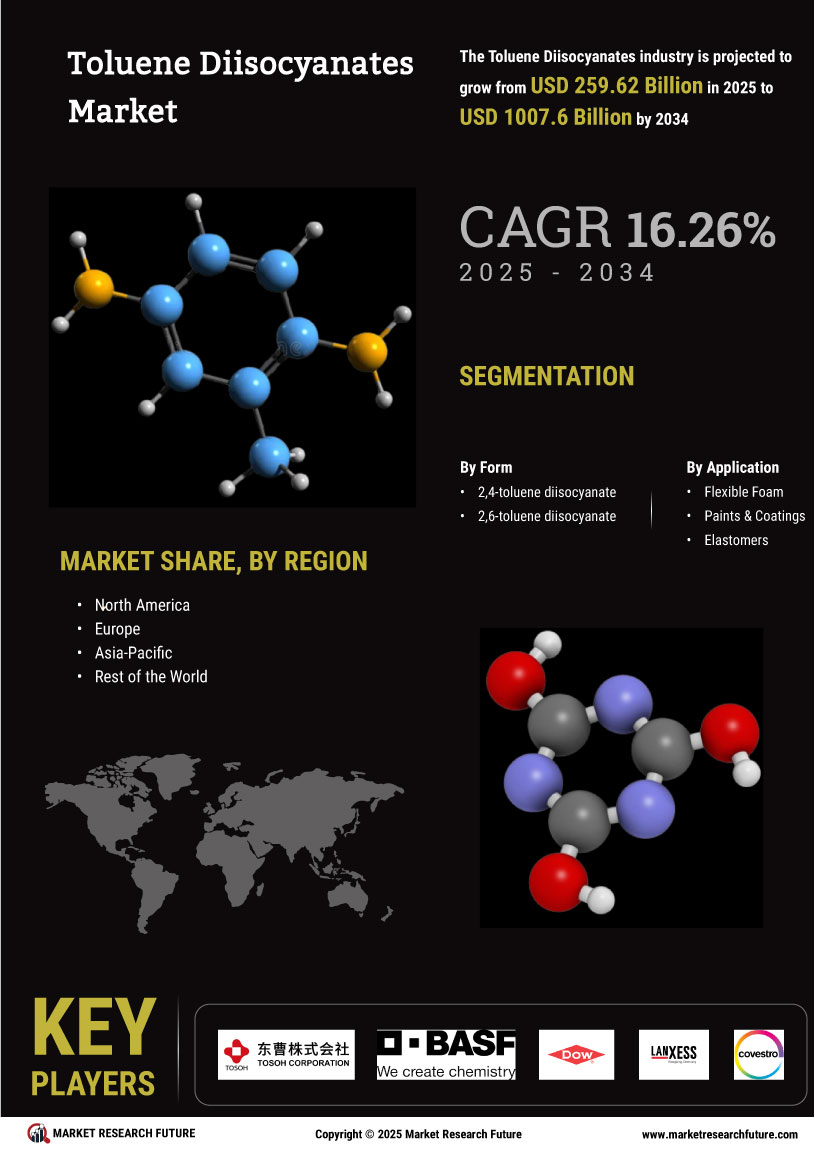

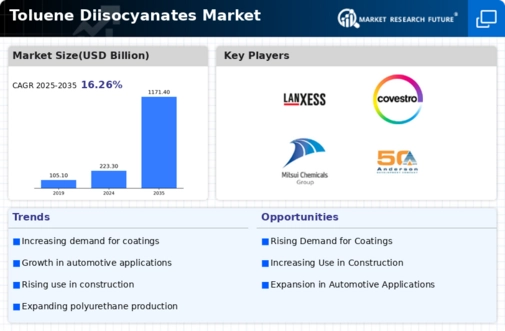

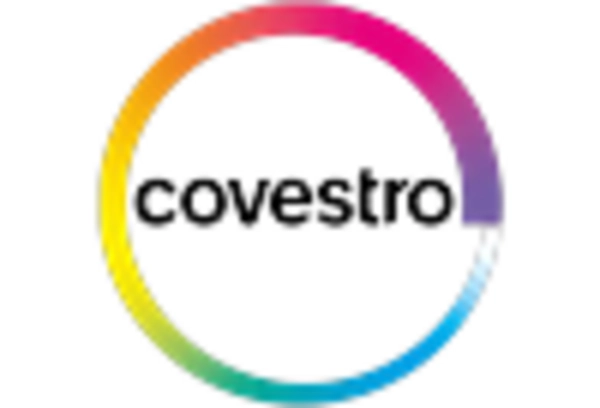

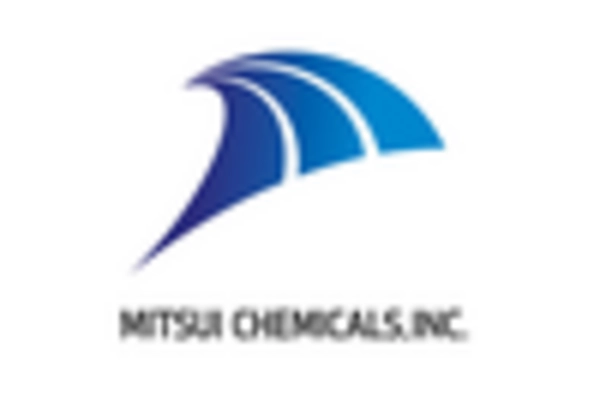
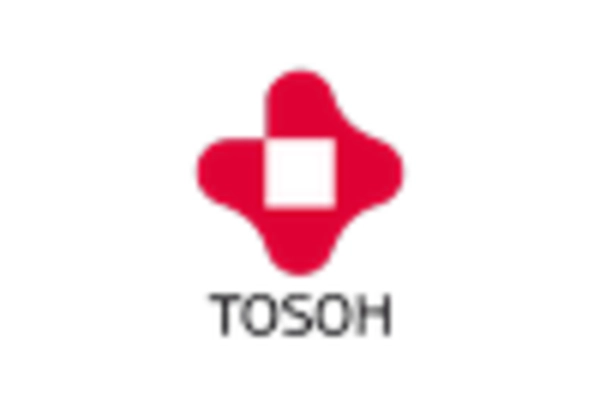
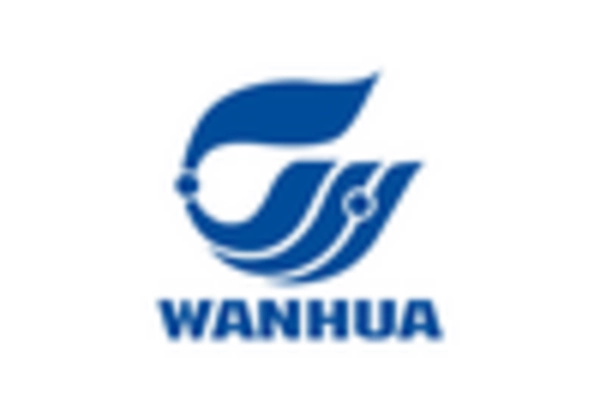








Leave a Comment